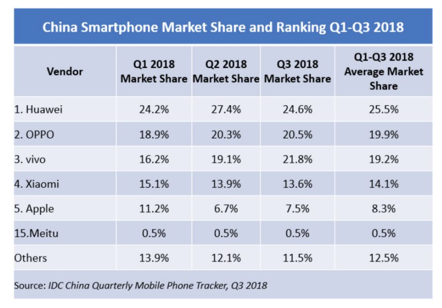Portfolio Changes:
Move Autohone (ATHM) from Hold a Half to Sell
Move BilliBilli (BILI) from Hold to Sell
Why Asia & Emerging Growth?
2018 is now in the record books.
After a very rough December, the S&P 500 index finished the year down 6%. But many countries did worse.
The MSCI Emerging Market (EM) basket of 25 emerging market countries pulled back 15% in dollar terms, the Japan market was down 12%, and China’s Shanghai Composite index got clobbered, falling 25%. India ended the year down only 4.2% thanks to pro-business economic policies and an infrastructure boom.
Asian stock markets with deep ties to China’s manufacturing supply chain, Singapore, Malaysia and Indonesia, lost 8.8%, 5.3% and 7.1%, respectively, during the year.
Brazil stocks, which were breakeven in 2018, made broad gains (Brazil ETF (EWZ) up 6.4%) on Wednesday as new President Bolsonaro was sworn in on the back of promised market-oriented economic reforms plus the expectation of closer political ties with the U.S. spurring optimism.
This sort of change of political leadership oftentimes ignites bull markets in emerging markets. Our Brazil holding Vale (VALE), rated a Hold, was up 2.1%. No change in rating but VALE is viewed by many as a proxy for China growth and, of course, a play on broad commodities. I’ll be looking for new Brazil ideas.
China’s economy and consumers are clearly facing some headwinds as evidenced by comments by Apple CEO Tim Cook yesterday describing a first quarter 2019 revenue shortfall guidance:
“In fact, most of our revenue shortfall to our guidance, and over 100 percent of our year-over-year worldwide revenue decline, occurred in Greater China across iPhone, Mac and iPad,”
Maybe. But what Mr. Cook didn’t mention was that Apple has plenty of strong Chinese competitors. And China is Apple’s third-largest market representing 20% of iPhone sales.
China’s car sales have registered a double-digit yearly fall for three consecutive months. The country’s industrial profits fell for the first time in three years in November.
Given the weaker growth, sharp pullback in share prices and lack of a clear uptrend, we need to be highly selective and conservative. Still, keep in mind that Chinese economic growth exceeds 6% as do the great majority of emerging markets.
To reduce exposure to Chinese consumer stocks and raise some cash, I’m moving both Autohome (ATHM) and BiliBili (BILI) to a Sell rating.
No change in ratings for China Internet platform stocks Tencent (TCEHY) (Buy a Half ) and Alibaba (BABA) (Hold a Half). In the coming week I will send you a special update on this sector and these stocks.
MiX Telematics (MIXT) stacks up as a bargain compared to Workday (WDAY) and is still well above its October low but this recommendation got off to a poor start before finding its footing. We will stick with our Hold a Half position for now.
AngloGold Ashanti (AU) has done its job since being added just last week as a nice “shock absorber” in an uncertain market. We will keep the Buy a Half position.
Next week, I will have an update on Nio Inc. (NIO), which is on our watch list and is one of China’s electric vehicle (EV) competitors to Tesla. I have been researching and closely following global and Chinese EV markets over the past year.
I expect the mandarins in Beijing will announce some reforms and measures to increase growth. Big institutional investors will be looking for a bottom in China so we need to keep in mind that things could turn fast.
Meanwhile, U.S.-China trade talks resume this week in Beijing.
Out-of-favor, hated and in an uptrend is the best situation for major gains.
Reviewing the Basics
Now, let’s turn the page to 2019 by first reviewing some basics.
Why are we, as investors, so interested in emerging growth markets?
The big picture is that the world is filling in fast as emerging markets “catch up” to the West on the back of greater access to technology, capital and trade.
And while India and China together account for 2.8 billion people and have 196 cities with populations of one million or more people –America has only ten.
But the Asia and emerging markets growth story goes beyond these two heavyweights—there are 23 other countries in the EM index—and they have a long way to go to catch up.
And no markets can move faster in a shorter time than emerging growth markets.
Youthful populations and the move of workers from rural areas to higher income jobs in the cities are supercharging growth in these economies. The median age of many of these countries is at the demographic sweet spot of 25 years, compared to 35 years in China and South Korea, and 45 years in Germany and Japan.
This explains the optimism driving families to open their first bank account and purchase new houses, washing machines, refrigerators, cars and better food and medical care.
To put things in perspective, 90% of emerging market citizens have never even been on a plane.
Here are some stats that highlight the enormous opportunity that lies ahead for Cabot Emerging Markets Investor subscribers.
Emerging growth markets now account for:
80% of the world’s population
40% of the world’s GDP
12% of global stock market value.
Here are the numbers for the United States:
5% of the world’s population
20% of the world’s GDP
55% of global stock market value
You can see that the 12% of global stock value is significantly out of balance and will very likely go up—a lot.
Here is a startling example of this imbalance.
The largest 50 companies in India have a total market value less than one U.S. company—Amazon.
Amazing. This gap is your opportunity and also why Amazon is busy investing in Indian logistics companies to build a powerful distribution platform.
Putting Emerging Markets in Perspective
Even I was surprised. Given the strong extended bull market for the S&P 500, I just naturally assumed that that since 2000, the performance of emerging markets would lag considerably behind the S&P 500.
Actually, total returns since January 2000 for the MSCI Emerging Markets index (EEM) are about the same as for the S&P 500—with both up 202%.
But no question about it—emerging markets gave investors a more volatile ride.
From 2004 to 2008, emerging markets were up 65% measured in U.S. dollars.
During and right after the global financial crisis—emerging markets fell sharply but then jumped 65% in the next 12 months.
From 2011 to 2015 they were down 40%. But from January 1, 2016 through January 1, 2018, the MSCI emerging market ETF (EEM) increased 34%.
Then concern over debt issues in Argentina and Turkey, a stronger dollar and trade tension between the U.S. and China all fueled a 2018 pullback of 15%.
It goes without saying that these numbers are for the broad emerging market index basket made up of 25 countries and 800 stocks—specific stocks in the index fluctuate much more widely—both up and down.
This is why emerging growth markets put a high premium on stock picking.
What should we as investors make of all this and, more importantly, what’s likely to happen going in 2019?
An Opportunity to Buy Emerging Market Growth on the Cheap
The goal of the Cabot Emerging Markets Investor is both simple and challenging—to capture as much as possible of these up trends while minimizing or avoiding losses in the downturns.
The ideal time to enter emerging markets is when they are hated, out of favor but in an uptrend.
A great time is when they’re in a clear uptrend and you jump on and ride the momentum. Then we need to pull back, take profits, and protect hard-earned capital when momentum falters.
Right now emerging markets, especially in China, are out of favor and cheap relative to more developed markets. But the uptrend is not clear.
There is reason for optimism. First, U.S. stock markets, even after a rough ride in the last quarter of 2018, looks expensive relative to emerging market stock markets.
Yale economist Robert Shiller uses a long-term valuation model that shows emerging market stocks trading at levels 40% cheaper than the S&P 500 index.
In addition to emerging markets being dirt cheap, a number of other factors could ignite an emerging market rally.
A trillion dollar U.S. budget deficit in 2019 and a slowdown in the U.S. economy could easily lead to a weaker U.S. dollar—this is always rocket fuel for emerging markets. Just as powerful would be big institutional investors waking up to the underweight emerging market allocations in their funds.
Finally, with both China and America facing slowing economies and President Trump and President Xi facing intense political pressure, there could be some sort of face-saving accommodation on trade and investment issues.
A stronger U.S. dollar last year hurt emerging markets—a weaker U.S. dollar in 2019 might do the opposite.
While we wait for the uptrend, I’ll continue to put forward the best ideas I can find.



